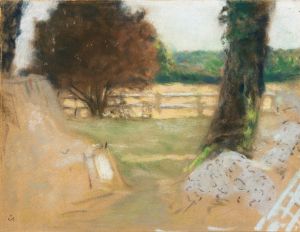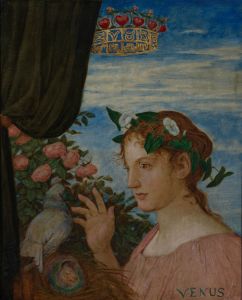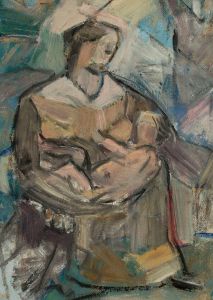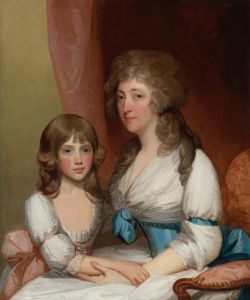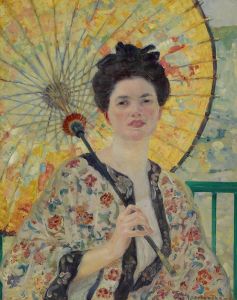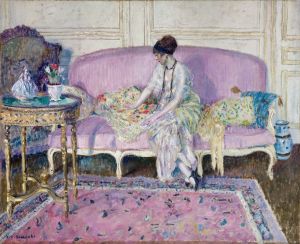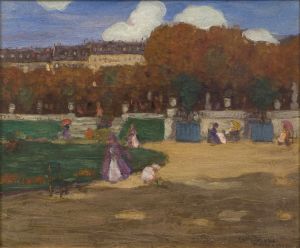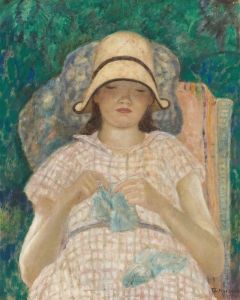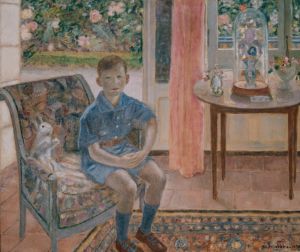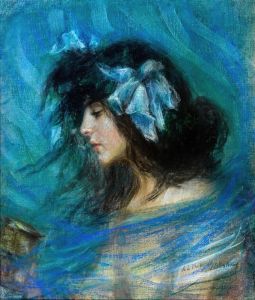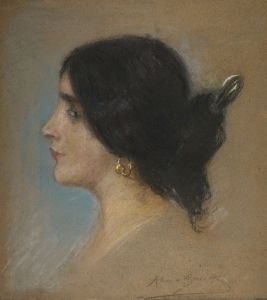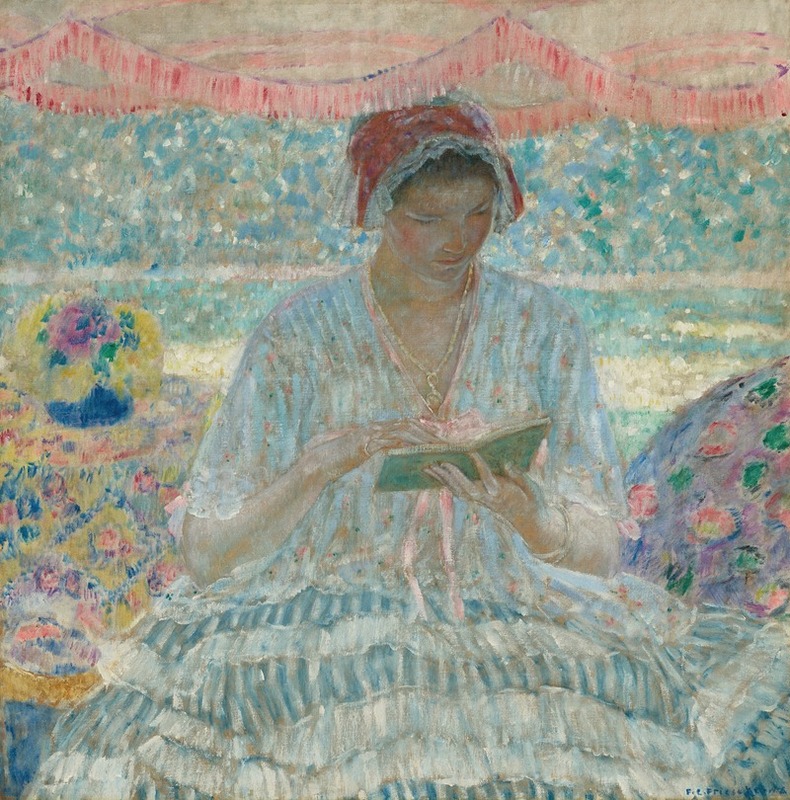
Under the Awning
A hand-painted replica of Frederick Carl Frieseke’s masterpiece Under the Awning, meticulously crafted by professional artists to capture the true essence of the original. Each piece is created with museum-quality canvas and rare mineral pigments, carefully painted by experienced artists with delicate brushstrokes and rich, layered colors to perfectly recreate the texture of the original artwork. Unlike machine-printed reproductions, this hand-painted version brings the painting to life, infused with the artist’s emotions and skill in every stroke. Whether for personal collection or home decoration, it instantly elevates the artistic atmosphere of any space.
"Under the Awning" is a painting by the American Impressionist artist Frederick Carl Frieseke. Born in 1874 in Owosso, Michigan, Frieseke became one of the prominent figures in the American Impressionist movement, particularly known for his depictions of women in intimate, sunlit settings. He spent a significant portion of his career in France, where he was influenced by the French Impressionists and became associated with the Giverny art colony, which was famously home to Claude Monet.
"Under the Awning" exemplifies Frieseke's fascination with light and color, as well as his focus on domestic and leisurely scenes. The painting portrays a woman seated under a striped awning, likely in a garden or terrace setting. The awning casts dappled shadows, creating a play of light and shade that is characteristic of Frieseke's work. The woman's relaxed posture and the serene environment reflect the artist's interest in capturing moments of quiet contemplation and everyday beauty.
Frieseke's technique in "Under the Awning" demonstrates his mastery of Impressionist principles. He employs loose, fluid brushstrokes and a vibrant palette to convey the effects of sunlight filtering through the awning. The interplay of light and shadow not only highlights the figure but also creates a sense of depth and atmosphere. The use of color is particularly notable, with the artist employing a range of hues to depict the various textures and surfaces within the scene.
The subject matter of "Under the Awning" aligns with Frieseke's broader body of work, which often features women in private, sunlit spaces. These settings allowed him to explore the effects of natural light on the human form and surroundings, a central concern of the Impressionist movement. Frieseke's interest in such themes can be traced back to his time in Giverny, where he was surrounded by artists who shared his fascination with light and color.
Frederick Carl Frieseke's contributions to American Impressionism have been widely recognized, and his works are held in numerous public and private collections. "Under the Awning" is a testament to his skill in capturing the ephemeral qualities of light and his ability to infuse everyday scenes with a sense of tranquility and beauty. The painting continues to be appreciated for its technical proficiency and its evocative portrayal of a moment of quiet repose.
In summary, "Under the Awning" by Frederick Carl Frieseke is a quintessential example of American Impressionism, showcasing the artist's adept use of light, color, and composition to create a serene and intimate scene. The painting reflects Frieseke's broader artistic interests and his significant contributions to the Impressionist movement.





